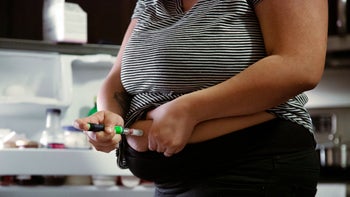
Insulin Costs Plummet: A Decade-Long High Comes to an End
Key takeaways:
The average price per insulin unit dropped 42%, from $0.33 in 2019 to $0.19, in mid-2024. That’s the lowest average recorded in a decade.
This dramatic decline reflects a combination of legislative action, such as Medicare caps introduced by the Inflation Reduction Act, and voluntary price cuts by manufacturers.
Medications like Lantus, Novolin N, Humalog, and Humulin N all saw steep price drops in 2024.

Millions of Americans have struggled to afford life-saving insulin for years. But recent efforts by lawmakers and manufacturers have finally begun to bring prices down.
The Inflation Reduction Act capped insulin costs for Medicare beneficiaries. And major manufacturers made voluntary price cuts. These moves drove big declines in insulin prices.
Products such as Lantus, Novolin N, Humalog, and Humulin N have all seen meaningful reductions. They reflect a broader shift toward greater insulin accessibility.
The data below illustrate this promising trend: Prices steadily dropped to an average of $0.19 per insulin unit in mid-2024 from a high of $0.33 in 2019.
This is the lowest average recorded in a decade. And it marks a 42% decrease from 2019. The price dips provide much-needed relief for those managing diabetes. The reductions signal progress but also underscore the need for continued action to ensure insulin remains affordable for all who need it.
So where do insulin prices stand today? And how much can you expect to pay for your insulin?
The GoodRx Research Team tracked the prices of 32 insulins across all manufacturers and insulin types, including short-, intermediate-, rapid-, and long-acting insulins. Here, we’ll walk you through each insulin’s cost and how you can get the best deal on these medications.
This GoodRx analysis is based on a representative sample of U.S. prescription fills (not GoodRx fills) and comes from several sources, including pharmacies and insurers. The reported prices per insulin unit are based on cash prices, the so-called “usual and customary” prices or retail prices at the pharmacy (not including insurance copays or coinsurance).
Generics and biosimilars are driving down the overall price of insulins
Since 2020, the overall retail price of insulins has declined by over 40%. Most of this decline is due to recent approvals of generics and biosimilars.
In 2019, Eli Lilly released the first generic insulin, insulin lispro. It is the counterpart to Humalog, a popular rapid-acting insulin. Since then, the FDA has approved generic versions of Humalog 75/25 (insulin lispro 75/25), Novolog (insulin aspart), Novolog 70/30 (insulin aspart 70/30), and Lantus (insulin glargine). Most recently, in July 2022, the FDA also approved a generic for the long-acting insulin Tresiba (insulin degludec).
Retail prices for generic insulin lispro, insulin aspart, and insulin glargine are currently about two-thirds that of Humalog, Novolog, and Lantus, respectively. The same goes for the generic mixed insulins, insulin lispro 75/25 and insulin aspart 70/30, and their counterparts, Humalog 75/25 and Novolog 70/30, respectively.
Read more like this
Explore these related articles, suggested for readers like you.
Generics have been instrumental in bringing down costs for some patients. Instead of paying over $400 for a package of 5 Humalog KwikPens, for example, patients can now pay around $260 for a package of 5 generic insulin lispro KwikPens.
“Follow-ons” have also helped to bring down insulin prices overall. Follow-on products contain close copies of the active ingredients in the brand-name medications. But unlike generics, they are not exact replicas.
In 2020, the FDA transitioned to a different pathway for approving these types of products. From that point forward, instead of being referred to as “follow-ons,” these close copies of biologic products like insulin became known as “biosimilars.” Overall, follow-on and biosimilar products tend to be more expensive than generics but less expensive than the brands.
As mentioned earlier, there are many types of mixed insulins on the market — both brand and generic. Overall, prices for mixed insulins have remained relatively stable in recent years with some forms, such as the insulin lispro 75/25 KwikPen, becoming less expensive.
The first chart below displays the per unit insulin price trends for mixed insulins by insulin ingredients. The second chart shows where prices for these insulins stand as of December 2024.
Traditional insulins are less expensive than modern insulins
Traditional insulins can be divided by their ingredient type into two groups: insulin isophane and insulin human. The price trends for both of these traditional insulin types are listed below.
The chart below displays the per insulin unit price trends for traditional short- and intermediate-acting insulins.
Historically, traditional insulins have cost less than their newer competitors. Modern insulins offer better blood sugar control. But they’re synthetic analogs of traditional insulins, which makes them more difficult (and pricier) to produce.
When patents on Humulin and Novolin expired around 2000, manufacturers Eli Lilly and Novo Nordisk also had to test new pricing strategies to remain competitive.
In 2017, for example, Novo Nordisk partnered with CVS to offer Novolin at roughly 80% less than its list price. Both Novo Nordisk and Eli Lilly have also worked with Walmart to heavily discount Novolin and Humulin under Walmart’s ReliOn line of insulin products.
Retail partnerships haven’t been their only strategy, though. Eli Lilly decided to stop price increases in 2017. In fact, prices of traditional Humulin and Novolin insulins have held fairly steady since then.
Eli Lilly also announced in March 2023 that it would cut prices for its most common insulins by 70%. It also capped monthly out-of-pocket costs for these medications at $35. This announcement affected insulins such as generic insulin lispro, Humalog, Humulin, and Rezvoglar.
Lantus manufacturer Sanofi made a similar announcement in March 2023. It capped out-of-pocket costs for Lantus at $35 for commercially insured patients and cut Lantus’s list price by nearly 80%.
The retail prices of traditional short- and intermediate-acting insulins are detailed below. Novolin R and Novolin N are currently the lowest-cost traditional insulins, with average unit prices as low as $0.02.
Vials are less expensive than newer dispensers
In 1985, Novo Nordisk introduced the first insulin pen, making it more convenient for patients to store and self-inject insulin — but it came at a price. Today, retail prices of rapid-acting insulins are generally higher if you opt for pens instead of vials. The chart below shows the price trends for rapid insulins by ingredient type.
New dispensers make insulin more expensive. We’re seeing that again with Afrezza, the only insulin to be delivered as an inhalable powder. One unit of Afrezza can cost more than 20 times the price of other types of rapid-acting insulins. Average retail prices for Afrezza continued rising in recent years, with a single insulin unit priced at $1.53 as of December, 2024. Fortunately, Afrezza’s manufacturer, MannKind, offers the medication at reduced costs through its savings programs.
Here are retail prices of rapid-acting insulins as of December 2024.
New product features can come with a high price tag
Novelty can translate to higher prices (as we saw with Afrezza).
For example, Xultophy and Soliqua both contain a long-acting insulin and another non-insulin diabetes medication. Xultophy is a combination of insulin degludec plus liraglutide (the same active ingredient in Victoza), and Soliqua is a mix of insulin glargine plus lixisenatide (the same active ingredient in Adlyxin). Average retail prices for Soliqua and Xultophy are more than double the price of less expensive alternatives like Basaglar and Tresiba, which have the same exact insulin ingredient.
Approved in June 2020, Lyumjev contains insulin lispro, the same insulin in Humalog, and some additional ingredients. In studies, Lyumjev was found to start lowering blood glucose sooner than Humalog, though this doesn’t necessarily make Lyumjev more effective than Humalog or generic insulin lispro at lowering blood sugar. At present, per insulin unit prices for Lyumjev are more than double that of generic insulin lispro.
Fiasp contains insulin aspart, the same insulin in Novolog, but it also has vitamin B3. Like Lyumjev, Fiasp’s added ingredient may speed up insulin absorption.
Then there’s Tresiba, an ultra-long-acting insulin that stays active for up to 42 hours. For this unique property, its average retail price is nearly $645 for a carton of 5 FlexTouch pens (100 iU/mL).
Along with these new formulations, insulin manufacturers have also started offering their insulins at higher concentrations to make them more convenient for people who need more insulin than average. Humulin R, Humalog, Lyumjev, and Tresiba all come in higher-concentration versions, and Toujeo is a higher-concentration version of Lantus. At first glance, their prices may seem high, but they actually go for the same per unit retail price as their lower-concentration counterparts.
The chart below displays the prices for all long-acting insulins in greater detail.
Ways to save on insulin
It’s difficult to predict where drug prices will be in the future. But if you take insulin, we hope our analysis gives you some ideas for how to talk to your provider about affordable options. Here are more ways you can save:
Use a manufacturer savings card or patient assistance program. Major insulin manufacturers Eli Lilly, Novo Nordisk, Sanofi-Aventis, and MannKind offer copay cards and patient assistance programs for patients with and without insurance coverage. In many cases, these programs can reduce out-of-pocket costs to as little as $0 per month. For more information, just search for your drug on goodrx.com, and scroll to “Ways to Save” for details.
Shop around. GoodRx offers discounts on insulin drugs, which can save you as much as 50% off the full retail price. At goodrx.com, you can also compare insulin prices at different pharmacies in your area and find information about discount programs at specific pharmacies.
Appeal your coverage. If you have insurance and your plan doesn’t cover the insulin you need, ask your doctor about submitting an appeal. Your insurance company may require a prior authorization or step therapy before you can fill your prescription, but it’s worth trying if you want to get your insulin covered.
Methodology
This analysis is based on a representative sample of U.S. prescription fills (not GoodRx fills) and comes from several sources, including pharmacies and insurers. The reported prices per insulin unit are based on cash prices, the so-called “usual and customary” prices or retail prices at the pharmacy.
The average price per insulin unit over time is calculated by taking an average of price per insulin unit across all insulin fills, weighted by the quantity of insulin units filled. Similarly, the average price per insulin unit for Afrezza over time is calculated by taking an average of price per insulin unit across all Afrezza fills, weighted by the quantity of insulin units filled.
For the plots of drug-level price per insulin unit over time, we set a threshold for a drug's inclusion by requiring a claim count threshold per quarter. In addition, a drug must have data for continuous quarters (no gaps) for inclusion into the plots. For the tables of drug-level prices of insulin, we required a higher claim threshold because we used a year of data (January 1, 2024 to December 31, 2024).
A note about insulin use
In general, 1 iU (insulin unit) is needed to lower blood glucose by 50 mg/dL, although it highly depends on the individual. Someone with Type 2 diabetes may start with 1 iU of insulin per 1 kg to 2 kg of bodyweight per day, which equates to about 40 units (iUs) of insulin per day for a 70 kg person.
Why trust our experts?


References
Center on Budget and Policy Priorities. (2022). Tracking the COVID-19 economy’s effects on food, housing, and employment hardships.
Cochrane, E., et al. (2021). House narrowly passes Biden’s social safety net and climate bill. The New York Times.
Congress.gov. (2023). S.954 - Affordable Insulin Now Act of 2023.
Eli Lilly and Company. (2016). BASAGLAR® (insulin glargine injection 100 units/mL), a long-acting basal insulin, is now available in U.S.
Eli Lilly and Company. (2019). Lilly's lower-priced insulin now available.
Eli Lilly and Company. (2020). Lilly Insulin Value Program savings card now available online.
Eli Lilly and Company. (2023). Lilly cuts insulin prices by 70% and caps patient insulin out-of-pocket costs at $35 per month.
FDA. (2017). FDA approves Admelog, the first short-acting ‘follow-on’ insulin product to treat diabetes.
FDA. (2020). Drug approval package: LYUMJEV.
FDA. (2020). Insulin gains new pathway to increased competition.
FDA. (2021). FDA approves first interchangeable biosimilar insulin product for treatment of diabetes.
Heise, T., et al. (2017). A pooled analysis of clinical pharmacology trials investigating the pharmacokinetic and pharmacodynamic characteristics of fast-acting insulin aspart in adults with Type 1 diabetes. Clinical Pharmacokinetics.
Leohr, J., et al. (2020). Pharmacokinetics and glucodynamics of ultra rapid Lispro (URLi) versus Humalog ® (Lispro) in patients with Type 2 diabetes mellitus: A phase I randomised, crossover study. Clinical Pharmacokinetics.
MannKind. (2022). Paying for Afrezza.
Novo Nordisk. (2020). COVID-19 Novo Nordisk information & resources.
Novo Nordisk. (2022). Novo Nordisk launches unbranded biologic of Tresiba analog insulin to expand affordability options for patients.
Ramsey Pflanzer, L. (2017). A drug company just struck a deal to discount the price of a lifesaving diabetes medication to $25. Business Insider.
Sherry, A.G., et al. (2020). Not so sweet: Insulin affordability over time. The Commonwealth Fund.
University of California, San Francisco. (2022). Calculating insulin dose.
Yan, K. (n.d.). Eight states pass legislation to place caps on insulin price; Five more await ruling. The diaTribe Foundation.




























